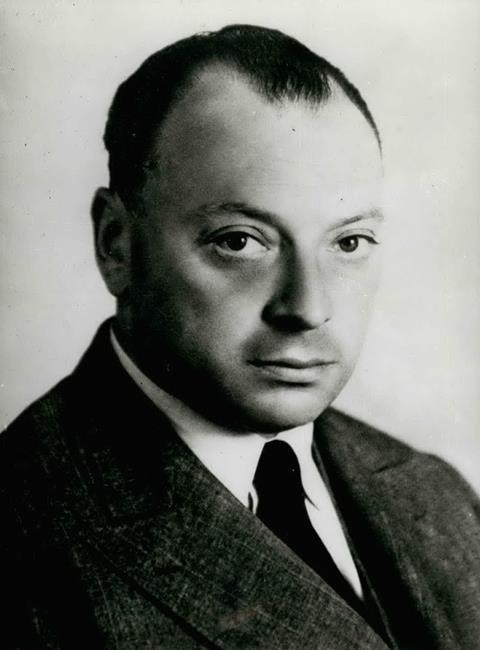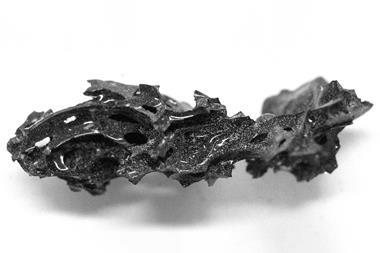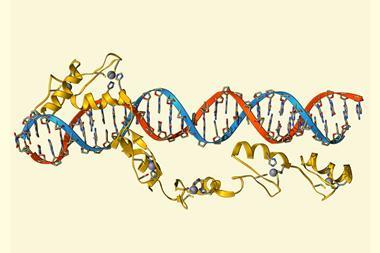How a quantum view of electron states enabled us to understand the stability of matter
It’s generally agreed that this year has been designated the UN International Year of Quantum Science and Technology to mark the centenary of Werner Heisenberg’s paper describing the first true version of quantum mechanics. His abstract theory supplied a calculus that enabled researchers to make predictions about phenomena such as atomic spectra – although in truth his matrix algebra was hard to use for anything more complicated than a hydrogen atom.

However, there is another quantum centenary this year that arguably means as much, if not more, to chemists. In February 1925, Wolfgang Pauli – like Heisenberg a part of the team in the orbit of Niels Bohr’s Institute for Theoretical Physics in Copenhagen, Denmark – published a paper (in German) titled ‘On the connection between the completion of electron groups in an atom with the complex structure of spectra’.1 Here he outlined what became known as the exclusion principle, which governs the way electrons become configured in the orbitals of atoms and molecules. Pauli’s idea not only explained the fine details of the electronic spectra of atoms but also ultimately rationalised electron pairing in covalent bonds and made sense of the periodic table. Along with Bohr’s theory of the quantum atom in 1913, the paper might be regarded as establishing a proper quantum description of chemistry.
In Bohr’s 1913 papers he envisaged atoms along the lines established by his mentor Ernest Rutherford: dense nuclei orbited by electrons. Bohr’s idea was that the energies and frequencies of the electron states are quantised, so that they may jump between orbits by absorbing or emitting light of the appropriate frequency.
Heisenberg was keen to dispense with any physical picture involving electron orbits, insisting that quantum mechanics should work only with what could be observed, such as spectral frequencies and intensities. But the Copenhagen group agreed at least that the right way to formalise the states of electrons was in terms of quantum numbers. Bohr’s quantum atom was predicated on the notion of orbits being organised into successive shells designated by a principal quantum number n – this idea explained the simple mathematical relationships previously observed between the spectral lines for hydrogen, called the Balmer series. But to more fully explain atomic spectra it was necessary to add other ‘auxiliary’ quantum numbers, now generally written as l and ml, which denote the quantised angular momenta and magnetic moments of the electronic subshells s, p, d and so on.
Spectral splitting and spin
Pauli supposed that a further quantum number (now written ms) was needed to explain why spectral lines could be split in two by an applied magnetic field – the so-called Zeeman effect. Arnold Sommerfeld in Munich, Germany had previously added a fourth quantum number in an ad hoc way to try to accommodate the Zeeman effect, saying it applied to some ‘hidden rotation’. But of what?
In early 1926 Dutch physicists Samuel Goudsmit and George Uhlenbeck proposed that these extra quantum states were produced by something like a spinning electron, which could spin in two opposite directions, giving different energies in a magnetic field. This is not exactly the classical notion of spin but shares the characteristic of being associated with rotational angular momentum. Pauli initially rejected the idea of spin rather casually, but later realised it was correct.
In his 1925 paper, he simply accepted the fourth quantum number ms as relating to the magnetic moment of an electron, recognising that it could take the values ±½. The four numbers then wholly characterised an electron’s state. Pauli supposed that as more electrons get added to atoms as the atomic number increases, those already present retain their quantum numbers so that there is a gradual and systematic buildup (Aufbau) of states – an idea already proposed by Bohr. And here was the key: ‘There can never be two or more equivalent electrons in an atom,’ Pauli wrote, ‘for which … the values of all quantum numbers … are the same. If an electron is present in the atom for which these quantum numbers … have definite values, this state is ‘occupied’.’ Given the two-valuedness of ms, this meant that each orbital (as we’d say now) defined by n, l and ml can accommodate just two electrons.
Pauli showed what this implied for the electron configurations of the noble gases, and it was immediately clear that, along with the Aufbau principle, this approach could now account for the form of the entire periodic table. But more than that: Pauli’s exclusion principle, by prohibiting two electrons from sharing a quantum state, also forbids them from occupying the same location in space, and so it produces an effective repulsion much more absolute than that generated by their like charge. It is primarily this that prevents matter from collapsing on itself; in other words, it is what keeps matter stable. Well worth celebrating, I’d say.
References
1 W Pauli, Z. Phys., 1925, 31, 765 (DOI: 10.1007/BF02980631)

















2 readers' comments